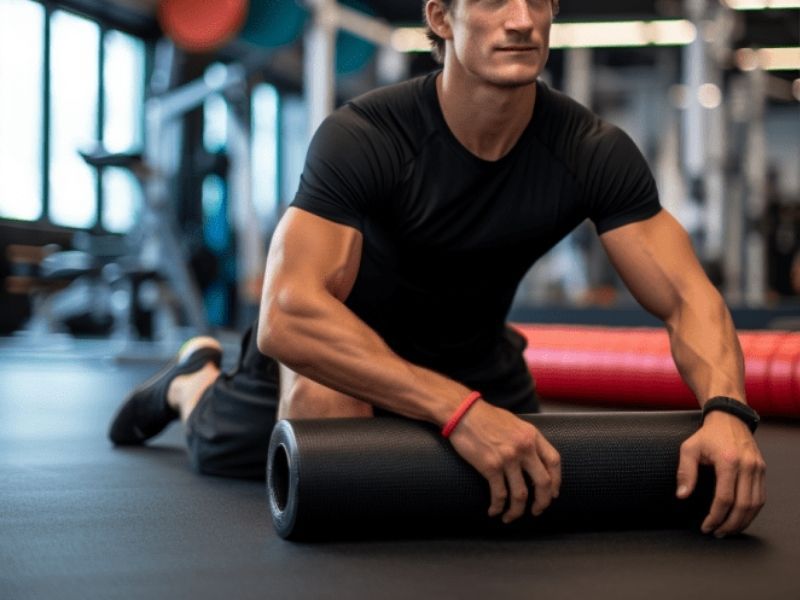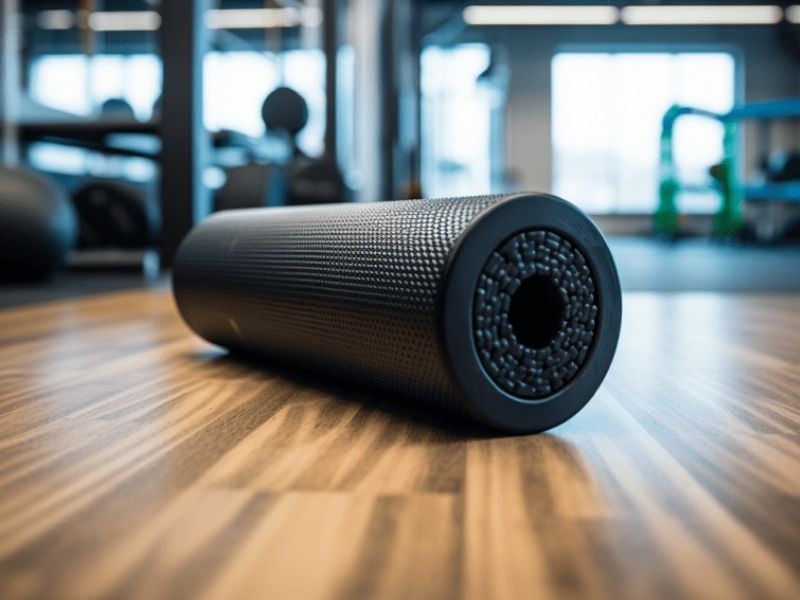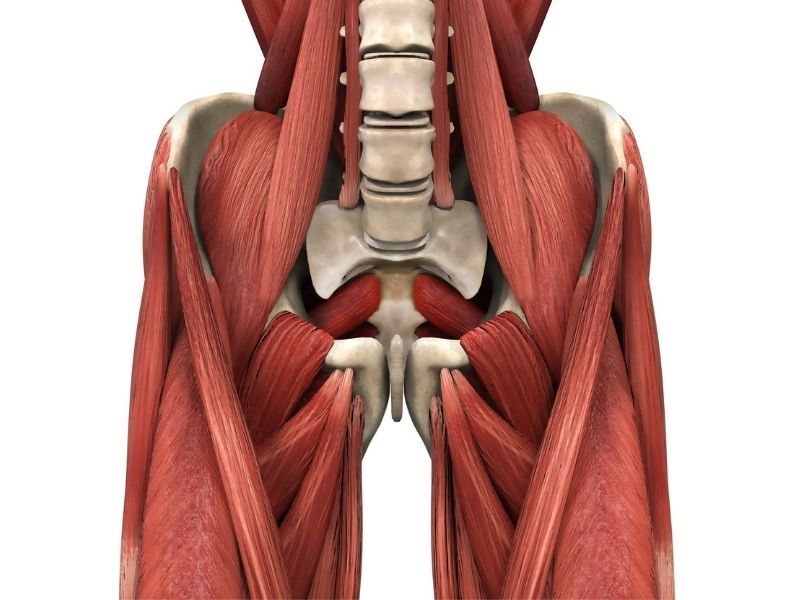Foam Rolling: A Beginner’s Guide

Foam rolling is a self-massage technique that utilizes a foam cylinder to release muscle tightness and tension. It has become a popular way for beginners to improve flexibility, relieve soreness, and support overall well-being.
Specifically for beginners, foam rolling can enhance flexibility, reduce post-workout muscle soreness, and provide relaxation. This guide will provide foam rolling basics, from proper technique to creating a starter routine.
Whether you’re new to fitness or just looking to enhance your workouts, foam rolling offers numerous benefits. The targeted pressure can increase blood flow, improve range of motion, and help prevent injury. When performed correctly, almost anyone can incorporate foam rolling into their fitness journey.
By starting with basic exercises and foam rolling best practices, beginners can ease into this beneficial activity safely. Follow along for step-by-step instructions on the best foam rolling exercises for beginners.
Also be sure to check out our previous post, Foam Rolling 101 for additional info.
Why Start Foam Rolling?
Foam rolling provides both physical and mental rewards on the path towards better health. Here are some of the top reasons to add it to your routine:
- Reduces muscle tightness from poor posture or strain
- Restores mobility by loosening tense areas
- Prepares muscles for workout by increasing joint range of motion and improving blood flow
- Soothes soreness and speeds recovery after exercise
- Improves circulation through gentle tissue massage
- Potentially reduces risk of injury by enhancing flexibility
- Offers pain relief through low-threat novel stimulation
- Provides stress relief and relaxation
The unique pressure from foam rolling can yield improvements unachievable through stretching alone. Dedicate just 10-15 minutes 1-3 times per week to feel the benefits.
Choosing the Right Foam Roller
With different sizes, textures and densities available, selecting the ideal foam roller ensures safety and effectiveness. Here are key factors for beginners to consider:
- Size: Standard rollers are 12-18 inches long. Mini rollers are more portable while 36-inch rollers allow you to lie on top.
- Density: Opt for medium soft density. Very soft rollers offer insufficient pressure while hard ones are overly intense.
- Texture: Smooth rollers without ridges are suitable for beginners.
Try an in-store test roll to assess comfort and pressure before purchasing. It should provide gentle-but-firm support.
Step-by-Step Rolling Exercises
Follow these illustrated guides to roll out your upper body, core and lower body like a pro:
Upper Body
Shoulders: Sit with roller under upper back. Extend arms straight out to sides. Slowly roll back and forth from low shoulder blade to upper shoulder.
Arms: Sit with one arm extended, palm down. Place roller under forearm. Roll from elbow to wrist. Repeat on other arm.
Upper back: Lie back with roller under mid-upper back. Cross arms in front. Raise hips and slowly roll up to armpits and down.
Core
Lower back: Sit with roller under curve of low back. Cross ankles. Place hands behind knees. Tilt pelvis back and roll up to mid-back.
Abs: Lie back with roller under abdomen above naval. Place hands behind head. Contract abs and slowly roll roller side to side.
Lower Body
Glutes: Sit on roller, placing one glute cheek on roller. Cross ankle over opposite knee. Roll from hip to mid-glute. Repeat on other side.
Quads: Lie facedown with roller under thigh of one leg. Support weight on forearms. Roll from hip to above knee. Repeat with other leg.
Calves: Sit with one leg extended, placing roller under mid-calf. Support weight with hands behind you. Roll up and down calf, repeating on other side.
Common Mistakes to Avoid
As a foam rolling beginner, it’s normal to make some errors. Watch out for these common missteps:
- Rolling too fast or aggressively before you’re warmed up
- Allowing the roller to roll away uncontrolled rather than moving slowly
- Focusing solely on problem areas, rather than entire muscles
- Progressing too quickly rather than gradually increasing pressure
- Rolling joints or spine rather than surrounding muscles
- Pushing through sharp pain rather than easing up pressure
Remember to start slow and focus on proper form. It may feel awkward at first, but your technique and body awareness will improve with practice.
Developing an Effective Routine
To fully reap the rewards, foam rolling should be done consistently. Here are tips for creating a sustainable routine:
- Schedule sessions right before stretching or after workouts when muscles are warm.
- Target 1-3 muscle groups per session, spending at least 90 seconds rolling each area.
- Gradually increase pressure and duration, while reducing frequency to 2-3 times per week to avoid overuse.
- Pair foam rolling with stretching, massage, or physical therapy for compounding benefits.
- Listen to your body and adjust your routine as needed allowing for rest days.
- Use a foam rolling journal or app to track progress over time.
Consistency and patience are key. Stick with it to make foam rolling a habit.
Conclusion
For beginners, foam rolling can provide numerous benefits like enhanced flexibility, relief from muscle soreness, and overall improved muscle health. When starting a foam rolling routine, opt for a soft, smooth roller and focus on proper technique. Incorporate it consistently to reap the rewards of this beneficial activity.
Sam Visnic
I’ve spent my life studying the fundamental aspects of human health with a focus on movement and clinical massage therapy. In a world of specialists, surgical procedures, drugs and quick fix remedies, I’m committed to finding and developing strategies that help people stuck at the “gap”. Over the last 20 years I’ve studied dozens of systems and methodologies for uncovering the root cause of aches and pains, along with postural and movement issues. Pain science, the art and science of hands-on soft tissue massage techniques, myofascial release, and coaching movement is essential in my practice. Integrating different methods but above all deciphering WHEN to use different techniques with different people and situations, along with integration of movements that people want to be able to do again is the key to long term success with my incredible track record with clients. Understanding the various elements that contribute to conditions and the power of communication and education makes my Release Muscle Therapy program separate from other hands-on therapy approaches.
Blogs You May Be Interested In
Categories
-
Deep Gluteal Pain Syndrome
-
Deltoids
-
Fallbrook
-
Foam Rolling
-
Glutes
-
Hamstrings
-
Hypnosis For Pain
-
Lats
-
Levator Scapulae
-
Lifestyle
-
Massage Therapy
-
Mobility
-
Movement and Exercise
-
Murrieta
-
Muscles
-
Nutrition
-
Obliques
-
Pain
-
Pectorals
-
Piriformis
-
Plantar Fasciitis
-
Product Review
-
Psoas
-
Quadratus Lumborum
-
Quadriceps
-
Rhomboids
-
Serratus Anterior
-
SI Joint
-
Sternocleidomastoid
-
Stretching
-
Subscapularis
-
Temecula
-
TMJ
-
Trapezius
-
Uncategorized

















